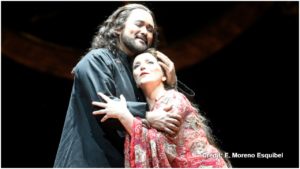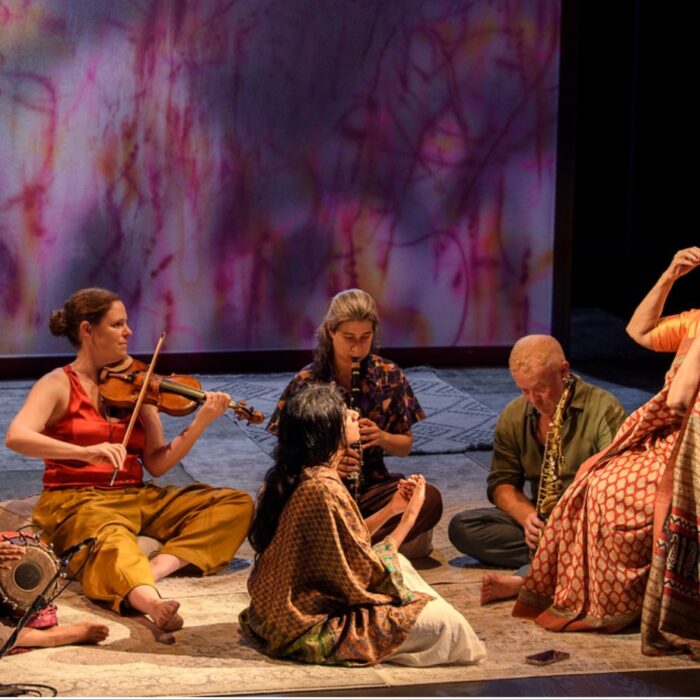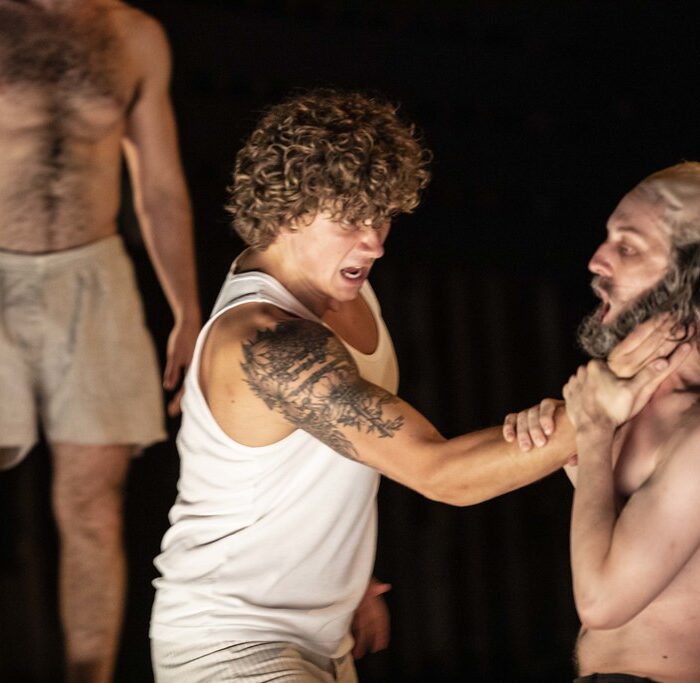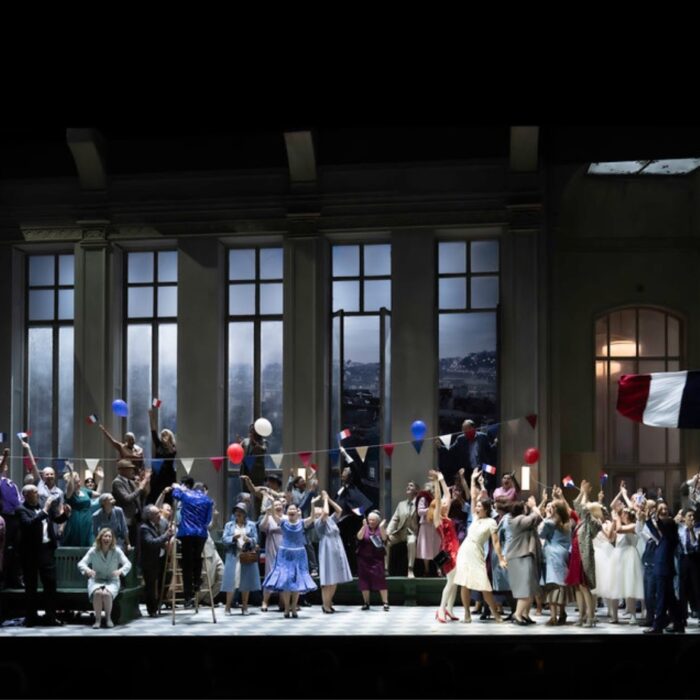
Asociación Bilbaína de Amigos de la Ópera 2018-19 Review: Les Pêcheurs de Perles
Javier Camarena, Maria José Moreno, Lucas Meachem Shine In Bizet Masterwork
By Mauricio Villa“Les Pêcheurs de Perles” is but one of two operas by Bizet regularly performed. And even still, this work is heavily overshadowed by “Carmen,” one of the great classics of the repertory.
Written by the young 26-year-old Bizet, the work features an inspiring atmospheric score with a deep taste of exoticism and mysticism; it is incredible how Bizet, who had not traveled to India or Spain, managed to obtain such a perfect musical recreation of both countries in his most recognized operas. Some of his melodies are overpowering and deeply moving and in his time, Bizet was accused of Wagnerism for his modern approach.
But even if the composition is really strong, we can find the reluctancy of performing this opera often due to its weak and predictable libretto and the difficulty of casting the leading roles.
A Great Challenge
The story follows the plot of the love triangle where the soprano and tenor are in love and are confronted by the despised lover (the baritone), tropes already quite present in the bel canto or early Verdi operas. However, this work bucks one trend of those works by creating a happy ending.
In terms of casting, you need a tenor who can sing heroically but has to be able to sustained long legato phrases, sing in the passagio zone of the voice often, and reach high B naturals effortlessly and in pianissimi. You also have to find a lyrical soprano with a strong center but at the same time solid coloratura and high notes. The final piece of the puzzle is a lyrical baritone who can sustain a high tessitura and high notes with a strong dark timbre. In truth it might actually be easier to cast Carmen, Don Jose and Escamillo whose vocal lines are more accessible than Nadir, Leïla and Zurga.
Pizzi’s Mixed Bag
Pier Luigi Pizzi directed the production at Asociación Bilbaína de Amigos de la Ópera, which originally premiered at the Teatro de la Fenice in Venice 2004. He was in charge of the stage directing, sets, costumes and lighting. He has had a successful career for over 60 years where he has worked in hundreds of productions, but it is very complicated to cover all the aspects of staging an opera and to be truly brilliant in every field.
Pizzi started his career as set designer and that is where he shines best. He proposed an oneiric space dominated on the first level with U-shaped, bright, red, steep platform which covers the front of the stage from side to side, and a black pyramid staircase upstage. There are mystical Indian elements that come onto the stage, like the temple that rises up beautifully at the top of the staircase during the prelude ( though the effect was abused a bit much throughout the performance, creating general tedium) or the three God statues that appeared for Act two.
The costumes are beautiful and reflect India and the period where the opera is set. The lighting reinforces the continuous contrast between colorful sets and costumes with the darkness of the staircase and black, mirrored wall. There is mystical sense all over the production where he centers his concept, avoiding any connotation to elements like the sea, which has a strong presence in the composition. It is a beautiful production and Pizzi made some astounding photographic moments. It is a pleasure to just enjoy the opera rather than spend the performance trying to guess what it is about and what the director has on his or her mind.
That said, the main problem with this production, and Pizzi’s work in general, is that there is no stage directing of the performers at all. The artists are left to fill in those blanks on their own, whether it be development of characters or moments. The actions, as directed, can be reduced to placing the singers in beautiful poses and marked movements that reflect the emotion of that situation. The result is full of old theatre clichés.
The chorus was relegated to sing behind the platform, on the staircase or at both sides of it, with barely any interaction with the action. Pizzi decided to give a strong presence to the ballet, something that he usually does in his productions, with a strong musically choreography from the talented Gheorghe Iancu; the ballet was probably the highlight of his production, but it is an easy resource to use ballet to give strength and dynamism when there is a lack of theatre work. In addition, the U-shaped steep platform seemed dangerous for the performers as you could see how they suffered every time they had to enter or go off stage through it; the dancers also seemed more preoccupied with not falling and finding good placement for their feet than performing the steps.
The Great Tenor
Javier Camarena showed once more how to put the voice to the service of a devilish score, bringing out all the emotion of the music with his breath-taking diminuendos and pianissimos, effortless and secure high notes and a pure fluid vocal line. Every scene he was on stage was just mesmerizing.
The character of Nadir has just a brief but heroic recitative, which Camarena interpreted bravely, bringing out the passion of the character relying on his depurate vocal projection and warm timbre to reach the very last corner of the theatre. From there he went straight into what probably is the most famous and beautiful tenor-baritone duets in the history of Opera: “Au fond du temple saint.” He sang with delicacy, attacking the high B flats with pianissimo sound but blending perfectly with that of Lucas Meachem’s voice; they received the first big ovation of the night.
Then he sang the famous aria “Je crois entendre encore,” giving a masterclass in how this aria should be sung. He displayed not only a perfect technique and attention to the dynamics, but transmitted all the sweetness and dream state of this inspired passage. It is a very difficult aria to sing; considering the repertoire that Camarena sings, the aria is not very high for him (reaching two B natural and an optional high C) though it moves constantly in the upper register of the voice between G and A and the passagio zone, territory where Camarena’s voice shines. That said, the voice is completely exposed as it is barely accompanied by the orchestra and it is written in never-ending legato phrases which should be sing in mezza voce.
After a remarkable first verse, he went into the repetition even softer, with a whispering tone which soared over the floating melody of the strings and winds. He lay on his back on the floor to produce an astonishing soft high C (I never though anyone could sing such a high note in that position), ending the aria with an ethereal diminuendo on a high A.
The rest of the performance kept up his high standards, with his immaculate phrasing, ending the duet with Leila with a pianissimo high B, and a passionate interpretation of “Ô lumière sainte.”
Nadir is yet another role where Camarena has no competition.
Not To Be Missed
The Spanish soprano María José Moreno sung the priestess Leïla. She utilized all the resources of her lirica-leggera warm voice to sound dramatic and powerful in her duet with Zurga in Act three; but she never pushed her sound in what was probably the most uncomfortable passage of the opera for her and even concluded with an interpolated high D. She was spectacular in her aria “Ô Dieu Brahma,” where she showed her secure coloratura, exquisite piannisimi and staccato notes, ending on a high D. There was equally expressive lyricism in her second aria “Me voila seule dans la nuit,” during which she showed all the vulnerability and fears of her character. Her love duet with “Nadir” in Act Two was emotional and tender.
Moreno is a remarkable actress. She builds her character through movement and the position of the arms, her postures. You would never think she was debuting the role. Having sung at the Vienna Staatsoper, La Scala, the Rossini Opera Festival, as well as being a frequent performer at the Teatre del Liceu and Teatro Real in Spain, it surprises me that such an excellent artist does not received more international projects. She is a soprano not to be missed.
The American baritone Lucas Meachen had the difficult task of replacing Mariusz Kwiecien, who fell ill during rehearsals, on the role of Zurga. That said, he succeeded with flying colors. His voice is just impressive, potent, strong but at the same time flexible and has secure high notes as he demonstrated with an impossible high A in “Oui, l’humble fille sera digne.”
French baritone roles usually have a higher tessitura than baritone in the Italian or German repertoire and Zurga is no exception, having F sharps and G´s in all his major passages, as well as an optional high A flat ( which he decided to sing in falsetto to soften the sound, but with uneven result) and the already mentioned high A.
His interpretation of the third Act aria “L’orage s’est calmé…Ô Nadir” was remarkable as it is so difficult to shine when put against the more melodic solos of the the tenor and soprano. He is still young, and he should be singing more French and lyrical roles, but I can only imagine that he is set to become an incredible Rigoletto or Count di Luna in the future.
Bass Felipe Bou was solid as Nourabad, while the chorus sounded subdued and distant. The Bilbao Orkestra Sinfonikoa was conducted by the Italian Francesco Ivan Ciampi who reinforced the exoticism of Bizet’s score with timbre nuances and balanced tempi; he used a clever measure of the fortissimo, caring for the voices and obtaining amazing results like the storm at the end of Act two or “Dès que le soleil.” But it is in the subtlety where this opera is focused and Ciampi succeeded in reinforcing the atmosphere of mystery, love, friendship, and doubt presented in the famous duos and arias already mentioned.
“Les Pêcheurs de Perles” is an opera that should be performed more often because of the gorgeous splendor of the score, the Indian colors present in the orchestra and the long moving melodies. It was amazing that ABAO, which is a private association which can only handle about 4 or 5 titles per year, could present such an amazing cast and outstanding production.


